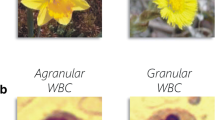Abstract
A novel algorithm inspired by the integral image representation to derive an increasing slope segment pattern spectrum (called the Slope Pattern Spectrum for convenience), is proposed. Although many pattern spectra algorithms have their roots in mathematical morphology, this is not the case for the proposed algorithm. Granulometries and their resulting pattern spectra are useful tools for texture or shape analysis in images since they characterize size distributions. Many applications such as texture classification and segmentation have demonstrated the importance of pattern spectra for image analysis. The Slope Pattern Spectra algorithm extracts a global image signature from an image based on increasing slope segments. High Steel Low Alloy (HSLA) steel and satellite images are used to demonstrate that the proposed algorithm is a fast and robust alternative to granulometric methods. The experimental results show that the proposed algorithm is efficient and has a faster execution time than Vincent’s linear granulometric technique.
Preview
Unable to display preview. Download preview PDF.
Similar content being viewed by others
References
Maragos, P.: Pattern spectrum and multiscale shape representation. IEEE Trans. Pattern Analysis and Machine intelligence 11, 701–716 (1989)
Haralick, R.M., Chen, S., Kanungo, T.: Recursive opening transform. In: IEEE Int. Computer Vision and Pattern Recognition Conf., June 1991, pp. 560–565. Addison-Wesley, Reading (1991)
Tang, X., Stewart, K., Vincent, H.H., Marra, M., Gallager, S., Davis, C.: Automatic Plankton image, recognition. Artificial Intelligence Review 12, 177–199 (1998)
Dougherty, E., Pels, J., Sand, F., Lent, D.: Morphological image segmentation by local granulometric size distributions. Journal of Electronic Imaging 1(1), 46–60 (1992)
Chen, Y., Dougherty, Y.: Grayscale morphological granulometric texture classification. Optical Engineering 33(8), 2713–2722 (1994)
Vincent, L.: Fast grayscale granulometry algorithms. In: Serra, J., Soille, P. (eds.) Mathematical Morphology and its Applications to Image Processing. EURASIP Workshop ISMM 1994, pp. 265–272. Kluwer Academic Publishers, Fontainebleau, France (1994)
Vincent, L.: Fast granulometric methods for the extraction of global image information. In: The proceedings of PRASA 2000, Broederstroom, South Africa, pp. 119–140 (2000)
Bleau, J., De Guise, A.R., Leblanc: A new set of fast algorithms for mathematical morphology. CVGIP Image understanding 56(2), 178–209 (1992)
Matheron, G.: Random Sets and Integral Geometry. John Wiley and Sons, New York (1975)
Serra, J.: Image Analysis and Mathematical Morphology, vol. 2. Academic Press, London (1988)
Nakagwa, Y., Rosenfeld, A.: A note on the use of local min and max operations in digital picture processing. IEEE Trans. Syst. Man. Cybernetics 8, 632–635 (1978)
Serra, J.: Image Analysis and Mathematical Morphology. Academic Press, London (1982)
Dougherty, E.R.: Euclidean grayscale granulometries: Representation and umbra inducement. Journal of Mathematical Imaging and Vision 1(1), 7–21 (1992)
Dougherty, E.R.: An introduction to morphological image processing. SPIE Tutorial Texts series, TT9. SPIE Optical Engineering Press (1992)
Viola, P., Jones, M.J.: Robust real-time face detection. International Journal of Computer Vision 57(2), 137–154 (2004)
Crow, F.: Summed area tables for texture mapping. Proc. of SIGGRAH 18(3), 207–212 (1984)
Lienhard, R., Maydt, J.: An extended set of Haar-Like feature for rapid object detection. In: Proc. ICIP 2002, New York, USA, September 2002, pp. 155–162 (2002)
Bors, A.G.: Introduction of the radial basis function (RBF) networks. In: Online Symposium for Electronics Engineers, vol. 1(1), pp. 1–7 (2001), http://www.osee.net/
Author information
Authors and Affiliations
Editor information
Rights and permissions
Copyright information
© 2008 Springer-Verlag Berlin Heidelberg
About this paper
Cite this paper
Toudjeu, I.T., van Wyk, B.J., van Wyk, M.A., van den Bergh, F. (2008). Global Image Feature Extraction Using Slope Pattern Spectra. In: Campilho, A., Kamel, M. (eds) Image Analysis and Recognition. ICIAR 2008. Lecture Notes in Computer Science, vol 5112. Springer, Berlin, Heidelberg. https://doi.org/10.1007/978-3-540-69812-8_63
Download citation
DOI: https://doi.org/10.1007/978-3-540-69812-8_63
Publisher Name: Springer, Berlin, Heidelberg
Print ISBN: 978-3-540-69811-1
Online ISBN: 978-3-540-69812-8
eBook Packages: Computer ScienceComputer Science (R0)




